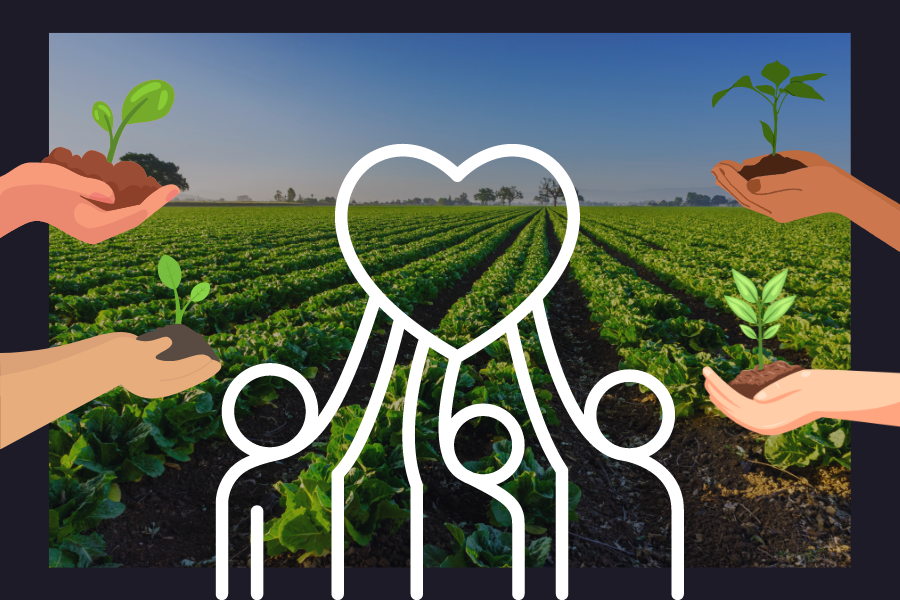This opinion piece was featured in CalMatters as a top ten finalist in their second annual Earth Day contest.
Family road trips have been a massive part of my childhood summers. The long, sweaty hours in the car, driving. I would watch the scenery change out the window on almost every trip. One of the most memorable areas of my landscape-watching has been the rows and rows of green Californian agriculture.
Politicians should take advantage of agriculture in order to battle climate change.
Farming is such a large part of California. According to Agricultural Land Loss and Conservation, out of the close to 100 million acres of land California is made of, about 43 million of those are used for agriculture.
Soil can be a huge part of keeping carbon out of the atmosphere and using it to become healthier for crops. Soil carbon sequestration is the trapping of carbon in the soil, ultimately making the soil more prosperous and the atmosphere cleaner.
Cover cropping is one way to increase soil carbon sequestration.
This method uses plants and crops simply to cover the soil, without the intention of harvesting. It makes the soil richer and healthier for the crops farmers actually intend to sell.
Typical cover crops include grasses and grains. They are grown to cover the soil, providing nutrients for organic matter to thrive and making it easier for crops to grow healthy in the future.
Cover crops allow more carbon dioxide to be trapped in the soil through photosynthesis. Not only could the widespread use of this put a significant dent in the amount of greenhouse gasses in the atmosphere, but it also supports the farms to thrive.
Most cover crops are grown and then tilled back into the soil when they are not needed anymore. This creates natural fertilizer that can reduce the amount of money farmers have to spend on their own fertilizers. Cover Crops and Crop Rotation | USDA says that cover crops prove to increase organic matter in the soil, which is essential for the strong growth of sellable plants. They can prevent erosion and runoff, attract pollinators, and ultimately lead to better food for us, make farming easier for farmers, and help respond to climate change. Studies show that improving soil and land use could offset greenhouse gas emissions anywhere between five and ten percent.
Implementing the use of cover crops on farms that don’t typically utilize that farming strategy may not be readily accepted by everyone.
Farms may be concerned about costs as money will have to be spent to buy extra crops besides those being sold. The fact that cover crops are not grown to be harvested and sold creates the risk of a negative profit. Also, extra management will be needed to plan, plant, and care for the cover crops.
A SARE article stated, “When evaluating average fields in average weather conditions, it can take three or more years for cover crops to pay off if no incentive payments are obtained and no special circumstances exist. However, every farmer has their own challenges and opportunities that can affect this picture.”
It could take a while to see good results from implementing cover cropping practices, making it difficult to encourage people to take up these practices.
A study by the Soil Health Institute showed that “on average, after implementing a SHMS [soil health management system], it cost producers $14/acre less to grow corn, $7/acre less to grow soybean and $16/acre less to grow all other crops.”
Although it may not seem like it is initially better, soil management leads to a bigger profit over time. Farms will become richer, and soils will become healthier, all while bettering the air for our planet.
I urge politicians to take agriculture into account when considering ways to fight climate change, especially with California being a center of land cultivation. Cover cropping is not the only way to improve our planetary health, and there are endless options for reducing greenhouse gas emissions through our farms.









